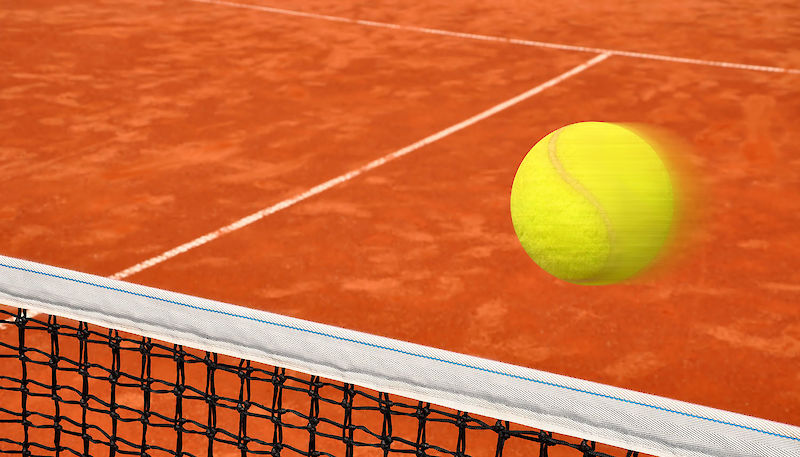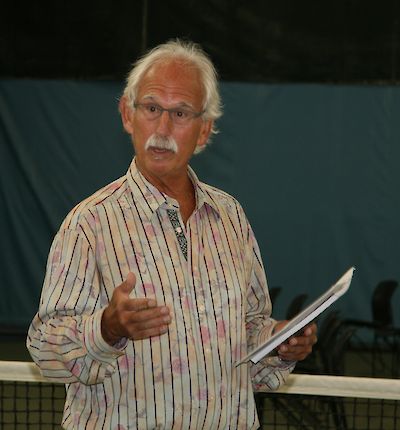Being an excellent observer is a part of having a complete mental game. Schewior will point out exactly WHAT to pay attention to and WHEN in his real time commentary.
Learning how to "see" what is happening not only makes a match more fun to watch, but it will also make you a better competitor.
Part of the reason that I wanted to start a live blog was to help tennis fans to "see" what is really going on in a match. Most of the blather of professional commentators is more often either dull, obvious, or a distraction from "seeing."
It was to my complete surprise then, when I tuned in yesterday morning to TCPlus to watch some doubles, that I discovered that the doubles were being shown WITHOUT commentators. The sounds to which I was exposed were exactly those of being at the match in person: the voice of the chair umpire calling the score, the encouraging calls and chants from the crowd, the grunts and groans of the players, and the communication between them. I was now free to let my mind drift rather than being directed by the usual drivel.
What exactly do I mean by "drivel?" Here are several examples: 1) A player misses a midcourt ball at 4-all 30-all. The commentator responds to this by saying something like:"This was not a good time to miss that shot." REALLY?? Any comments relating to the score should be viewed by a player's intent - not their result. This is because, if the correct plan is followed again and again, it gives a player the best chance at victory. For axample, Bolelli redlining it against Rafa in the first round. He didn't win, but he gave himself a chance. 2) All sorts of comments about what is happening off the court and away from the match. Do we really care that Serena was at Prince Harry's wedding or where Sharapova manufactures her candies? 3) Constant incorrect use of the word "momentum." Momentum means that the recent past will have an effect on what is happening now. Sophisticated statistical analyses of professional matches shows clearly that "momentum" either does not exist or is such a small quantity that it is basically useless as a framework for understanding tennis. Simply put, "momentum" is often used in place of "she is in the lead" and, all else equal, players in the lead tend to win. It's like having a head start in a race. However, especially if the race is long enough, there is ample space for the lead to change multiple times. A "momentum shift" is nothing more than a lead change.
Watching these couple of doubles matches without commentary reminded me of a solitary walk in the woods. Free to notice the calls of birds, the light and shadow, the occasional beautiful wild flower ... so glad that I didn't have an "expert" jabbering away, telling me what I was "seeing."
Or, like a trip through a museum without renting the official headphones so that I can "see" the works on the walls without hearing about them from an expert. (In this case, because I don't know much about art, I must admit that I rather like these official guides!)
So, what then did I "see" in these two men's doubles matches?
1) The synchronization of players moving without the ball in anticipation of the next shot by their partner is truly extraordinary. As players we should all be looking to develop our anticipatory moves.
2) At one moment in the first match, the ad court player from the team which ended up winning the match missed 8 returns in a row! Most of us would be quitting tennis if this happened to us. His reaction, however, was to keep plugging away, so that in the closing stages of the match, he became the star of the match. What perseverance!
3) Top pros have an incredible instinct for detecting nerves in their opponents and making the more nervous opponent hit the ball at the most crucial moments. In the Herbert/Mahut 2nd set tiebreak, with the score tied at 7-all, Mahut pulled Herbert back to the baseline and drove his return right at the netman, Nicholas Jarry, the more fragile of their opponents. He pulled Herbert back to the baseline to take away any easy finishing opportunity for Jarry. Jarry dumped the volley and the French team served out the match. The top players know when and how to vary the plays that they run - beautiful to watch!
Just a reminder: there is a difference between watching a match without commentators and watching with the volume on mute. In the first case, which I enjoyed so much, you have all of the sounds of being right there on the court - it's like you are there!

